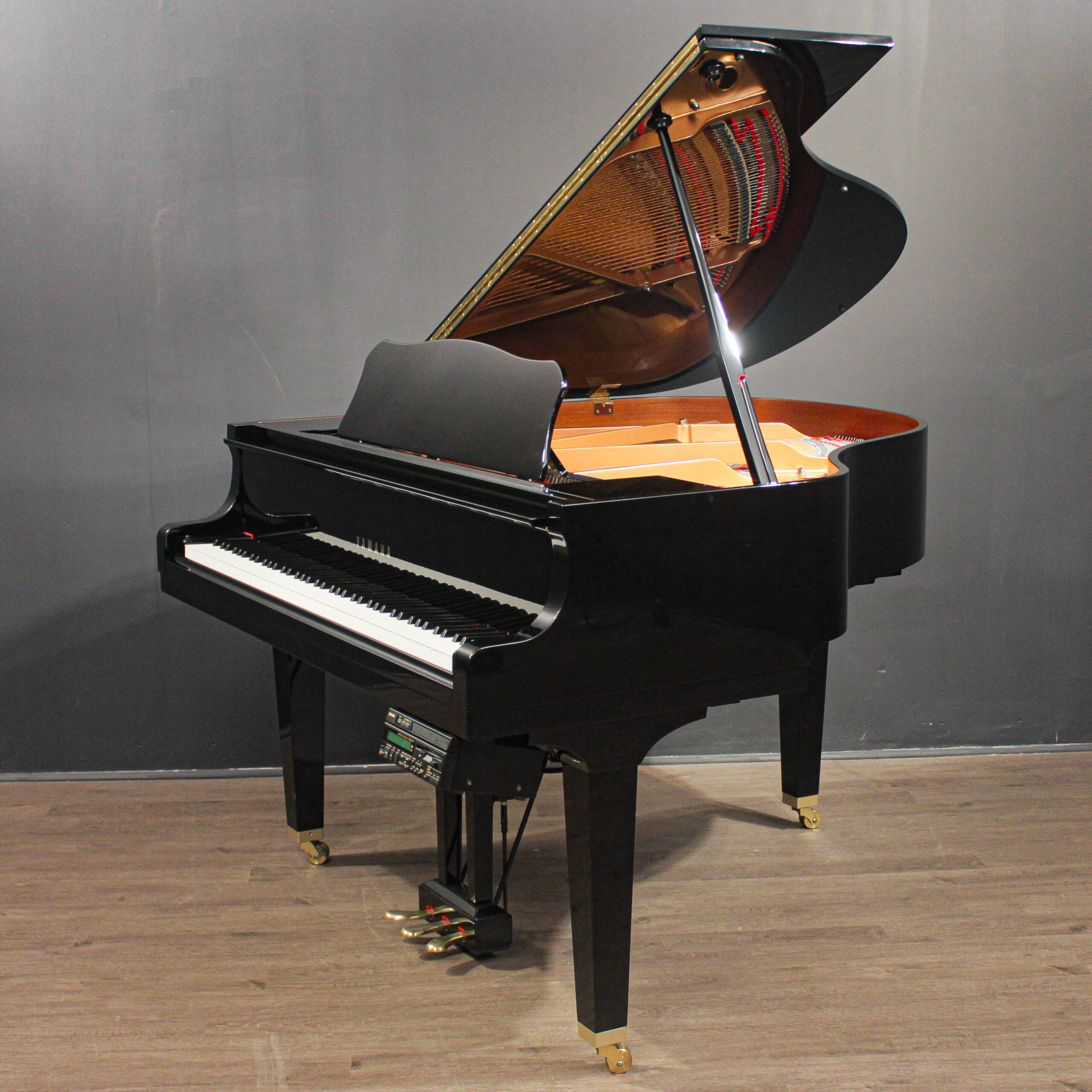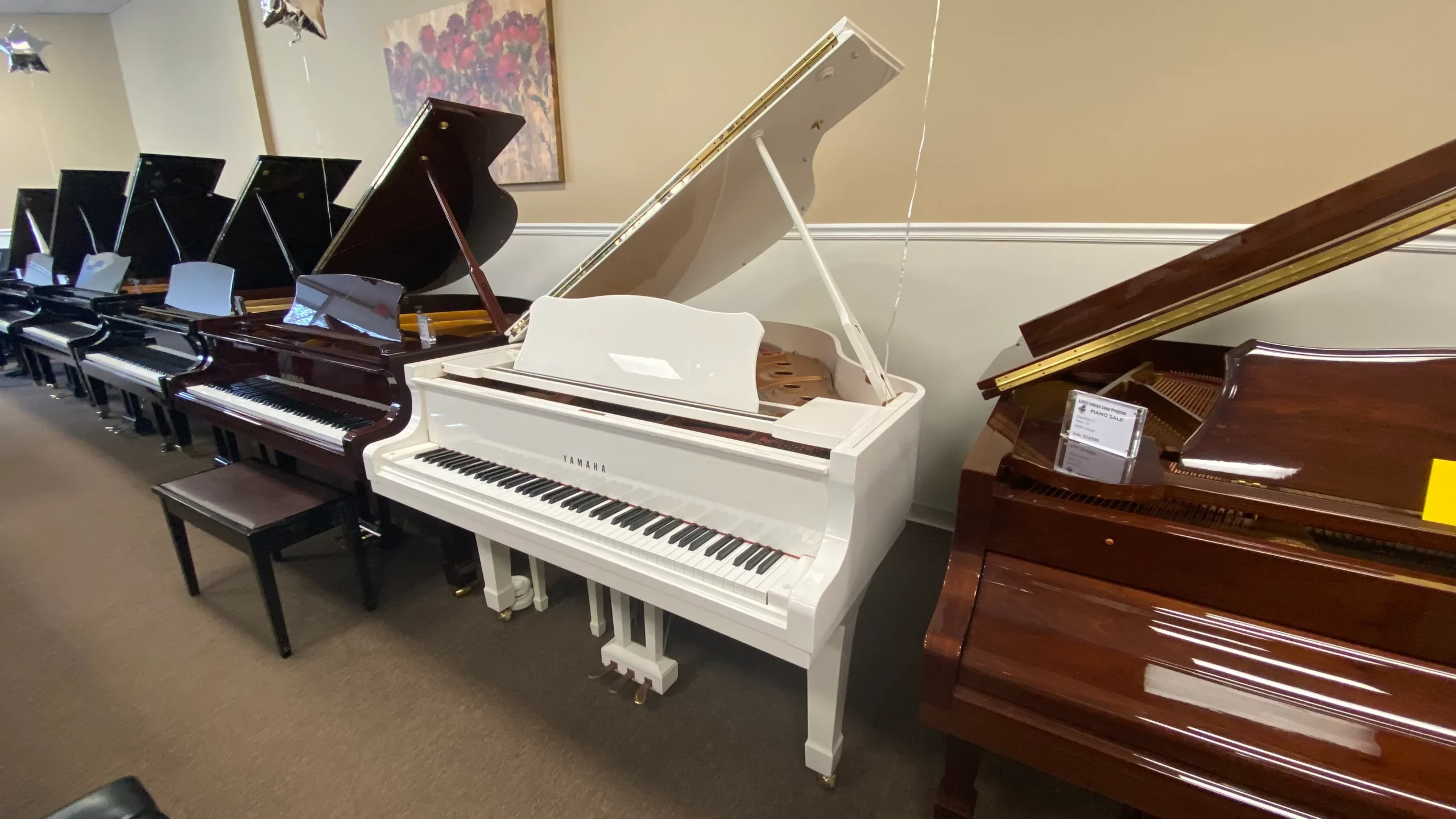Are you tired of struggling to play your favorite piano pieces because of sticky keys? As a beginner, I know how frustrating it can be to have this issue. But don’t worry, I’ve been there and I’m here to help!
In this handy guide, we’ll go through the step-by-step process of fixing sticky piano keys. No more struggling or avoiding certain keys while playing- you’ll be able to enjoy the full range of your instrument once again! Say goodbye to missed notes and hello to smooth playing with these simple tips and tricks for beginners. So let’s get started on learning how to fix those pesky sticky piano keys!
So, how to fix sticky piano keys?
Sticky piano keys can be a frustrating problem for beginners and experienced players alike. It can affect the sound and playability of your instrument, making it difficult to produce clean and smooth notes. But fear not, there are simple steps you can take to fix sticky piano keys.
Step 1: Identify the Sticky Keys
The first step is to identify which keys are sticking. This may seem obvious, but sometimes it’s hard to tell if it’s just one key or multiple ones causing the issue. Press down on each key individually and feel for any resistance or stickiness.
Step 2: Clean the Keys
Once you’ve identified the sticky keys, use a soft cloth dampened with water or rubbing alcohol to gently wipe down the surface of each key. Be sure to dry them thoroughly afterwards.
Step 3: Check Underneath
Sometimes dirt or debris can get trapped underneath the keys, causing them to stick. Use a small brush or vacuum attachment to carefully remove any buildup under the affected keys.
Step 4: Lubricate with Graphite Powder
For more stubborn sticky keys, you may need some extra help in lubricating them. Graphite powder is often used by professional technicians for this purpose as it reduces friction between moving parts without leaving behind residue like oil-based products do. Simply sprinkle a small amount onto a cloth and rub it along the sides of the sticky key.
Step 5: Test Your Work
After cleaning and lubricating, test out your work by pressing down on each previously sticky key again. If they still feel resistant or uneven when pressed, repeat steps 2-4 until they become smoother.
In conclusion, fixing sticky piano keys requires patience and attention to detail but is ultimately an easy task that anyone can do at home with basic supplies such as water/ rubbing alcohol and graphite powder (which can be found at most music stores). Regular maintenance will keep your piano playing smoothly for years to come. Happy playing!
Understanding the Causes of Sticky Piano Keys
Piano keys can be one of the most delicate parts of this beautiful instrument, often susceptible to becoming ‘sticky’ or unresponsive over time. This is a common issue experienced by many piano owners, and it’s important to understand that there are several different causes for these sticky situations.
One primary cause is humidity. Pianos are made largely from wood, which naturally expands and contracts due to changes in moisture levels in the air. When it’s particularly humid, the wood swells, causing friction between the keys – resulting in them sticking together or being difficult to press down. It’s like when you forget your wooden kitchen door open during a summer storm; those doors refuse to close properly until they’re dry again! Quite similar indeed.
On another note (pun intended), dust build-up may also lead towards sticky piano keys – especially if your beloved instrument sits untouched for long periods. Dust particles find their way into every corner over time and can gather around the sides of each key, leading them feeling gummy.
Finally,
- wear and tear: The constant striking on each key can wear certain parts down; making some not fully return after being pressed.
- natural aging process: As with anything created from organic materials like felt or leather used under piano keys- they degrade over time.
Understanding these causes is instrumental (another pun!) in preventing problems down the line or knowing how best to rectify any existing issues; ultimately helping ensure your piano continues playing sweet melodies for years!
Properly Dismantling Your Piano to Access Problematic Sticky Keys
Rolling up your sleeves to tackle sticky keys
If you’re the proud owner of a piano, there’s no doubt that its melodic charm is an irreplaceable part of your life. When one or more keys get stubborn and stick – it can be enough to pull at your heart strings! But don’t worry, with a bit of patience and care, you can dismantle it yourself. What lies beneath those beautiful black and white keys might seem complex but once you know how everything fits together, resolving such issues won’t sound like playing Beethoven’s Moonlight Sonata anymore!
To start with,
- Firstly, open the lid. This will expose the keyboard and make it easier for you to reach in.
- You then need to gently lift out the fallboard, which is essentially the cover over your precious keys.
- The next step involves removing each key individually – yes this may appear daunting initially but remember we are laying down our own rhythm!
Digging deeper into those problematic sticky whites and blacks…
Now that all keys are exposed comes time for some detective work! Dabble lightly on every single key from left (the lower notes) to right (high pitched ones). The goal here is simple – identify which ones have lost their springy bounce.
After marking these ‘problematic’ fellows down:
- Skillfully remove them by carefully sliding forward while lifting upwards using a gentle touch. Remember not to force anything as these components are delicate.
- Your search now turns toward locating any dirt or obstructions underneath causing them trouble. Rest assured knowing that even seemingly tiny amounts of dust could cause disruption leading to unresponding keystrokes!
Once found and cleaned out thoroughly –“Presto!” – it’s time to reassemble and the sticky key issue should be all but a distant memory. It’s just incredible how much of a difference a little bit of TLC can make. Now go forth, let your piano sing its sweet melody once again!
Read also: how to fix sticky piano keys
Steps to Clean and Lubricate Your Piano Keys
If your piano has lost its melodious charm, it’s time to bring back the harmony with a little TLC. Cleaning and lubricating your cherished piano keys can work wonders in restoring their original shine and sound. It’s an easy task that anyone can do from high-energy kids to music-loving adults, but only if they know how to take proper care of this sophisticated instrument.
Step One: Cleaning the Keys
Let’s start by cleaning them first. Put on a pair of soft gloves to prevent any scratches or damage. Grab a clean cloth, dip it slightly into lukewarm water mixed with mild soap ensuring not too damp as excessive moisture can harm your precious keys! Gently wipe each key from top to bottom taking care not to let any water drip between them which could severely affect the wood beneath.
- Clean white keys: Use diluted vinegar or lemon juice on natural ivory keys while just plain soapy water will suffice for plastic ones.
- Clean black keys: A dab of toothpaste works best here; rub gently then wipe off with a wet cloth.
Step Two: Lubricating the Keys
Once all the keys are thoroughly dry, it’s time for some much-needed lubrication – this helps keep them moving smoothly without sticking. Make sure only use specially designed piano key lubricants available at most music stores or online platforms.
- Lubricate white & black keys: Apply minimal amount using either cotton swab or small brush along edges where they come into contact with each other.
- Wait for few minutes until fully absorbed before closing lid preventing dust set-up inside.
Remember these steps aren’t just about maintenance but preserving that special bond you share with your beloved musical companion – after all, every note played resonates deep within one’s soul!
 how to fix sticky piano keys
how to fix sticky piano keys
Reassembling The Piano After Fixing The Issue of Sticky Keys
After you’ve fixed the sticky keys on your piano, it’s time for the final part of the process – reassembling your beloved instrument. This stage can be as delicate as a meticulously crafted symphony; every piece, like each note in a composition, must fit seamlessly to create an elegant whole. You start with replacing keys, making sure that they are aligned perfectly and there is no friction between them. They should glide smoothly when pressed, their movement reminiscent of a graceful ballet dancer leaping across the stage.
Next comes re-attaching dampers. These are vital components that control resonance and without which any attempt at playing would result in cacophony rather than music. Like skilled sound engineers ensuring that everything sounds just right during a live concert performance, you adjust their position until each damper connects to its corresponding key flawlessly.
- Meticulously inspect all parts.
- Make sure none of them have been damaged or misplaced during disassembly.
Then we move on to the most crucial step: tuning your piano post-reassembly. Using a specialized tool called a tuning hammer (or wrench), you slowly tune each string one by one until they harmonize together beautifully like synchronized swimmers performing an intricately choreographed routine.
Remember not to rush through this process – take your time, stay patient and methodical because even though it may seem tedious at times remember what lies ahead: A beautiful melody played on clean and fluid keys!
You may also like: c108 yamaha piano price
Conclusion: Maintaining Your Piano To Prevent Future Key Stickiness
In the world of music, a piano is undeniably a beautiful and complex instrument. Just like any other precious possession, it also requires regular care to maintain its performance. A commonly encountered issue with pianos is sticky keys—a phenomenon that can disrupt your playing experience and mar the beautiful melody you’re trying to create. But fear not! Taking proper steps in maintaining your piano can significantly help prevent future key stickiness.
Regular Cleaning: Dust, grime, or spilled liquids are some common reasons that cause piano keys to become sticky. With regular cleaning, you can avoid such issues effectively.
- Gently clean the keyboard using a dry, lint-free cloth.
- Avoid water or cleaning products as they may seep through gaps and damage internal parts.
- In case of stubborn stains or spills on white keys, slightly dampen your cloth with diluted mild soap solution and wipe carefully.
Maintain Humidity Levels: Changes in humidity levels greatly affect wooden components of the piano including keys. High humidity makes wood swell whereas low humidity dries it out causing shrinkage. Both conditions lead to key sticking.
- To monitor changes in indoor humidity levels regularly use an inexpensive hygrometer.
- If necessary consider investing in dehumidifiers or humidifiers depending on whether you need to remove excess moisture from air or add more respectively.
Remember! Your efforts towards maintaining your piano will ensure longevity for this wonderful instrument while keeping those troublesome sticky keys at bay.
Read also: gc1 yamaha piano

